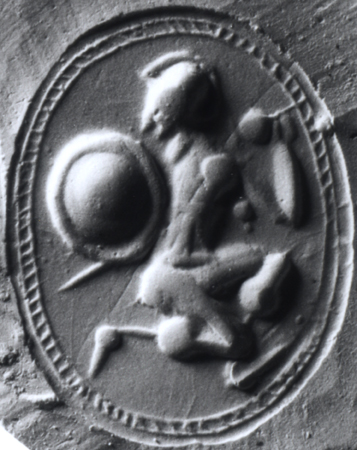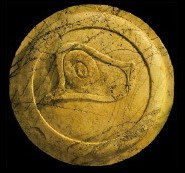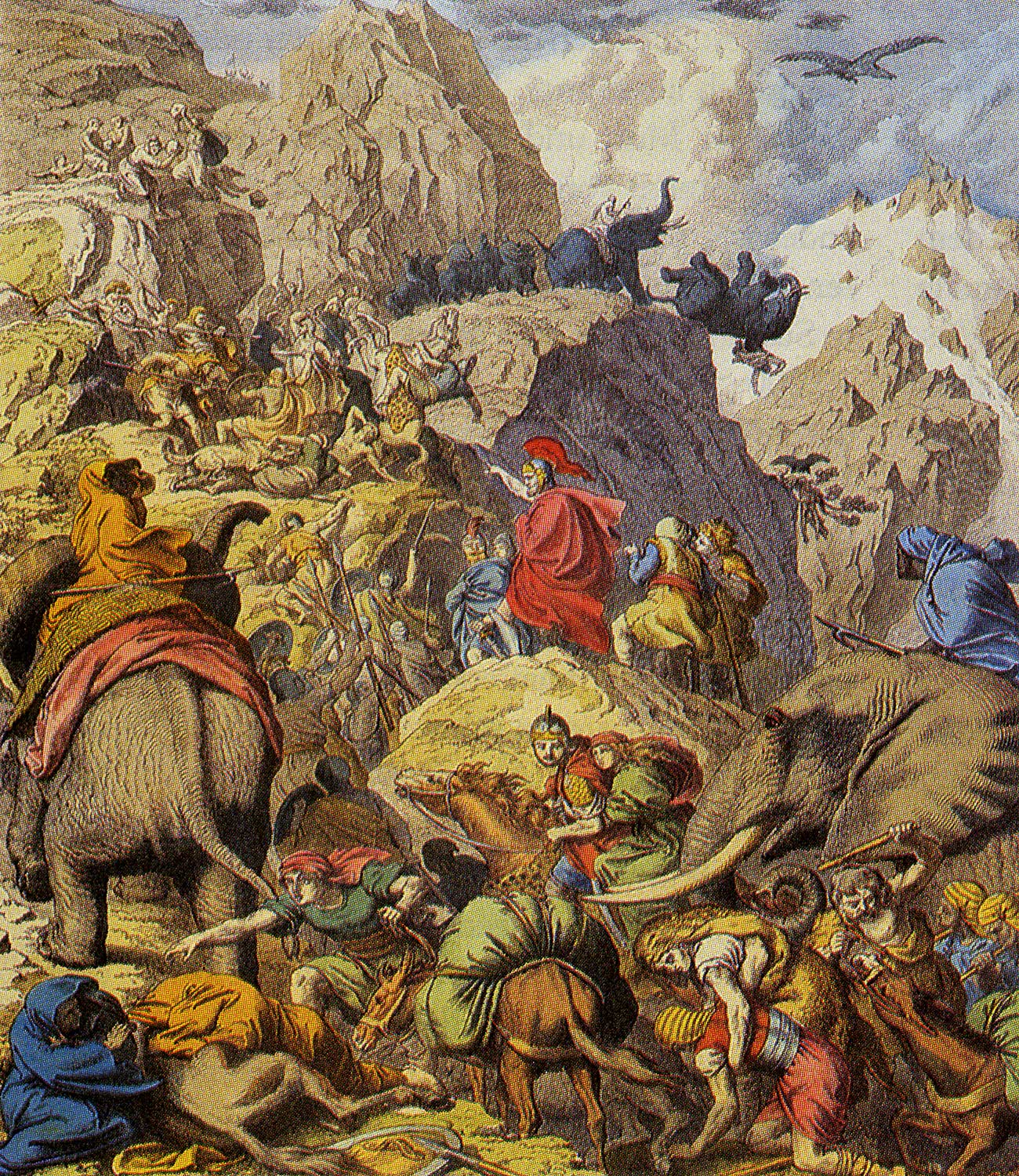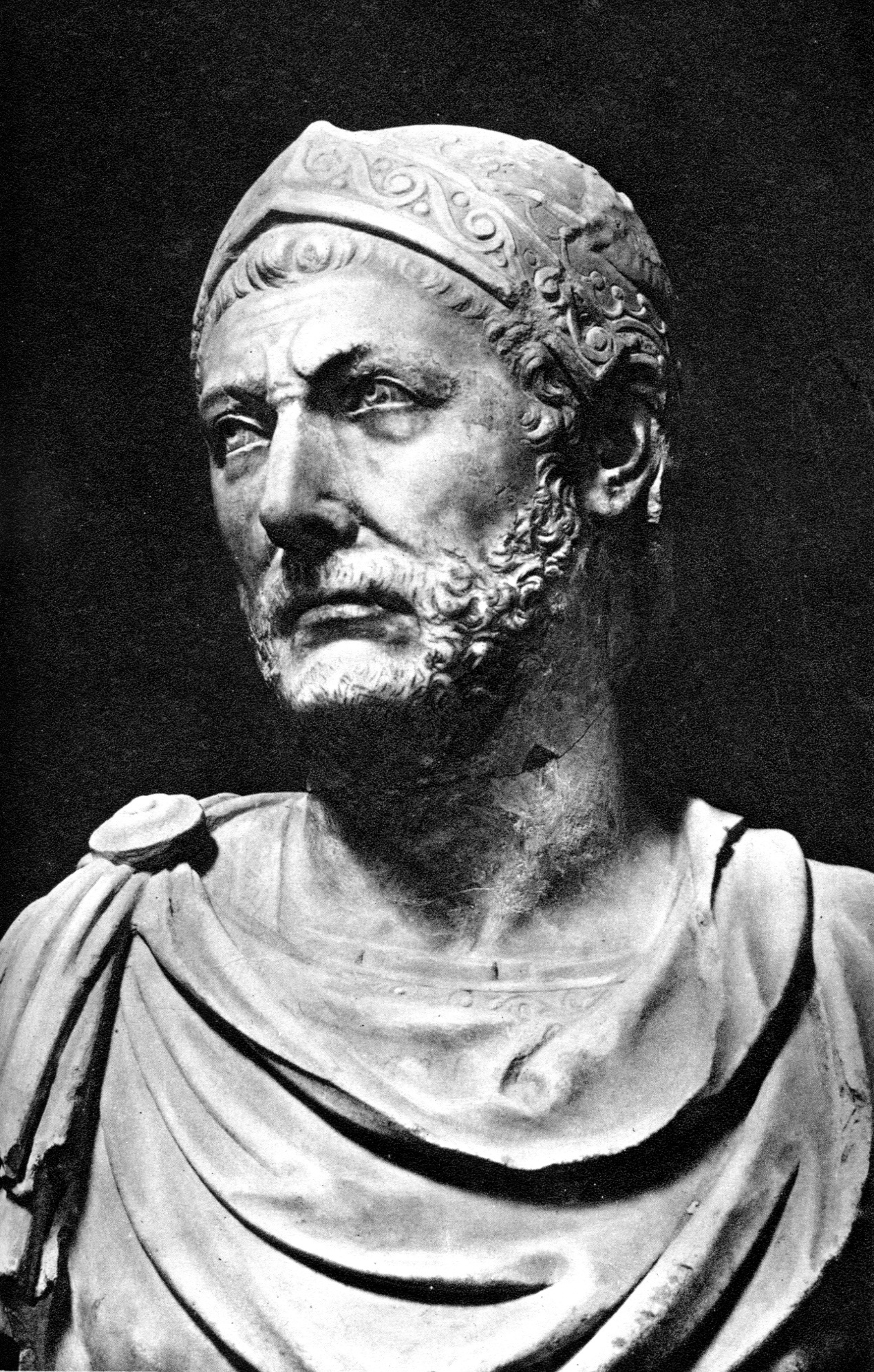I'm assembling my Carthaginian army on a 'single nation, three unit' basis. Starting with the Africans I build up a standard unit, a small unit, and a small unit of skirmishers. Then I move to Iberians, Italians, then Celts before I rinse and repeat. I may intersperse cycles of assembly with painting once I get some practice in on some lumpy Warlord/Immortal Greek slingers. It's been a long time since I've wielded my brush.
There's nothing like actual assembly to learn the strengths and weaknesses of a given kit. Here's my take on the first of several Punic releases by Victrix: their Carthaginian Warrior multi-set in 28mm.
Victrix Warriors of Carthage
The great Carthaginian general Hannibal led a multi-ethnic army primarily comprised of subject nations and mercenaries. Carthage was a trading empire, they favoured buying soldiers rather than waging war themselves. Hannibal and his family were atypical members of Carthage's small military class. Atypical in their ability to wage war for so long without being crucified (a traditional punishment for failed generals) and atypical in their talent for waging war (and thus avoiding the former fate).
The core of a Carthaginian army would be drawn from the subject Libyan or admixed Liby-Phonecian population surrounding Carthage. These would serve a role comparable to citizens of Greek or Italian city-states: forming a spear-armed phalanx and cavalry corps. The bulk of the army would be drawn from Numidian, Iberian, Gallic, Greek, and/or Italiote mercenaries. Rather than get them to conform to Carthage's pseudo-Hellenic methods, the foreign mercenaries were employed in their customary ways of war. In Hannibal's case, as a student of Alexander and Pyrrhus, the overall approach to war was a Hellenic combined arms one, as argued by J.E. Lendon in
Soldiers and Ghosts.
'Warriors of Carthage' is very much a starter set for building core units in an army of the Second Punic War. It comes with 24 Libyan spearmen equipped in the hoplite style, with somewhat shorter spears than their Greek counterparts. There are another 24 spearmen equipped as Hannibalic veterans, armoured in Roman or Celtic chainmail, presumably stripped from the dead at Trebbia and after.
If you wanted one or the other, well too bad, you're getting both. You're also getting 14 Libyan javelinmen whether you want them or not. At a price point of around 50p per figure that's pretty good, so not an awful lot to complain about. However, the mandatory inclusion of Libyan skirmishers may dampen the demand for the soon-to-be-released Numidian infantry.
There's enough figures here for building one to two units per type, depending on your system. I got away with two boxes for my army. I am unlikely to ever get more than one additional box.
If you've read Duncan Head's
Armies of the Macedonian and Punic Wars (AMPW) you will find much that is familiar here and in Victrix's Punic Wars range overall, with some minor deviations. The sculptor(s) for the Victrix range clearly drew heavily, and in many cases, directly from AMPW's descriptions and illustrations. This may be for better or for worse, depending on how you view AMPW's accuracy.
Readers familiar with discussions on TMP, The Miniatures Page, in particular the perspective of the late Allen Curtis, who authored
Warhammer Ancient Battles' Hannibal and the Punic Wars supplement, would know that a number of AMPW's interpretation of Carthaginian arms and armour have some question marks above them.
The figure numbers listed above include two sprues of three command figures: a unit leader, a standard bearer and a musician. The musician is garbed in a knee-length tunic and is unarmored. The leader and standard bearer are interchangeably in metal cuirass and scale armour. One wishes for more scale armour figures.
 |
| Command sprue. Unit leader, standard bearer and musician. |
The detail on the command set is great. So great as to raise worries of them overshadowing the personality figures that are, as of now, only available in metal from other manufacturers. Relic's Hannibal looks like it can hold its own against these sculpts.
Carthaginian Spearmen
 |
| Warriors sprue. Three regular Libyan spearmen, three veterans, two Libyan javelinmen. |
Multiple head options are included that range from pointy capped Punic helms to plundered Roman Montefortino headgear. Arms are spear only, apart from command who get the obligatory sword. As per AMPW, the Carthaginians here employ a spear that is shorter than the
doru of the Greek hoplite.
Libyan Spearman shields are modified versions of those found in Victrix's Greek range, with the only difference being a thicker vertical cross bar on the reverse.
Head talks of recessed shields used by Carthaginians, so I find it odd that in an otherwise faithful rendition, Victrix recycles their convex Greek hoplite shields here. To my knowledge, only 1st Corps has gone down the route of recessed Carthaginian shields as per AMPW. Is it too cynical to speculate that recessed shields would create problems for applying shield transfers?
Nonetheless, given the wide adoption of Greek arms and armour by the Carthaginians, the typical hoplite
aspis is plausible.
Though it won't be much noticeable on the final painted figure the sculpting issues with the shield-bearing left hand of Victrix's Greek hoplites has been resolved here. The left hand is better proportioned and is no longer a squarish block.
 |
Punic citizen spearmen at ease, and only at ease.
No wonder the Sacred Band got wiped out at Krimisos. |
The veteran spearmen only have
scuta as a shield option. Some additional
aspides would have leant themselves to the hybrid scavenged look of the veterans. As it is there are only enough
aspides to shield the three regular Libyan spearmen. However, six
scuta are provided. I would have thought the
aspis to be commonplace and the
scutum to be an
ad hoc or late adoption for Libyans in Carthaginian service. Victrix appears to think otherwise; their Carthaginian citizen spearmen also come with
scuta only.
(
EDIT: There's some speculation by Duncan Head in
Slingshot 272 that just prior to the Second Punic War the Carthaginians employed the
theuros and may have introduced it into southern and eastern Iberia during their conquests. If this is the case and the
aspis had been replaced by the
theuros then the extra
scuta provided could be suitable if the upper and lower rims were trimmed to make them less Roman.)
It is notable that the regular spearmen and veteran spearmen have mutually exclusive spear positions. The regular spearmen only hold their spears at the ready. The veterans all have theirs in an attack position. This is an odd decision. It could have been otherwise. Their Greek hoplites offer considerable flexibility in arm positions. Customisability is the niche strength of plastic kits.
 |
A thrusty veteran I knocked together just for this review.
I've made him with comparable kit to a number of metal designs
so you can see the differences. |
As it is, each of the three regular spearman bodies has a single spear pose, bar one body which has two. With four variant poses with no effective degrees of angling the spear, one is facing a diversity of poses comparable to metal figures where four variant poses is common. This leaves price and the sculpt quality as the only strengths for the Victrix Libyan spearman to rest upon. Thankfully, it's cheap and the detail is crisp. But I am still left unsatisfied with the range of possible poses.
The spears and javelins in this and subsequent set are much more slender than the 'tree trunk' shafts found in the later Greek sets. They are more fragile as a result, but look more realistic. I may try the strengthening trick of applying thinned down white glue on them after painting.
Libyan Javelinmen
A stronger example of customisation and realisation of AMPW are the 14 Libyan javelinmen that are included in the kit. 14 is an odd number by today's wargaming standards. Not many games recommend units in sizes divisible by seven. 16 would have been a better number.
Anyway, on to the good news. The head varieties for the Libyans cover exactly the tribal varieties listed by Duncan Head in AMPW. Front shaved, side shaved, mohawked and so on are available so that you could have levies from a single tribe or several mixed together. This is a nice touch.
Also good news is that in comparison to some of Victrix's other bareheaded offerings (Greek peltasts and Iberian warriors) the Libyans don't appear to have overly big heads. Though this probably has more to do with the partial absence of hair on much of the skull. The Libyan heads appear well-proportioned.
Conclusion
The Victrix Carthaginians have only one direct competitor in 28mm plastic kits, Agema Miniatures, who only make slim plastic Hannibalic veterans with metal heads. Sadly for Agema, few slender miniature lines of other nationalities are available. The Victrix figures fare well in terms of sculpt quality and build. In terms of chunkiness, they are of above average 'chunk' and should blend nicely with models from Crusader and A&A. I'll post up some comparisons once my command figures from those ranges arrive.
The options in this kit should allow you to play battles from the First Punic War until the Third Punic War. There was talk somewhere of Carthage having vast stores of chainmail when the Romans plundered it, so the Hannibalic Veterans could be used for the last stand.
For historical sticklers (and such is this hobby) the spearmen probably aren't suitable for the earlier wars with the Sicilian Greeks. Those would be Punic citizens rather than Libyan subjects (though there's little physical difference for the miniature hobbyist) armoured with metal cuirass and can be had from manufacturers such as Crusader. Victrix makes unarmoured Citizen Spearmen with Roman-style
scuta, but they're probably not much use beyond the second line at Zama or possibly some battles in Iberia.
Hits
- Well sculpted figures overall.
- Libyan javelinmen have very dynamic poses and hairstyles reflective of the literature.
- Libyan javelinmen have well-proportioned heads compared to previous Victrix ancient releases.
- Good mix of helmets on the spearmen. There's a few extra for head swaps on other kits, the forthcoming Greek Cavalry kit comes to mind.
- Price point: around 48p per figure, less if you shop around. Contrast to £1.12 to £1.50 for metal from various manufacturers.
Misses
 |
Three rows of bellybuttoned linothorax.
There's a similar hole in the javelinman on the right, but less noticeable due to the folds. |
- Some of the figures weren't cast with sufficient plastic. There were 'belly button' holes in some of the Libyan spearmen, with similar, but less noticeable, holes in the folds of some of the Libyan javelinmen. EDIT: I should add that I only had this problem on one out of my two boxes, and even then only on three out of seven sprues.
- Poses for the spearmen are restricted by troop type. Standing spears only for the citizen spearmen, thrusting spears for the veterans. Not as much variety as one might expect for plastic unless you starting sawing and greenstuffing. Surely mutually interchangeable arms for both types could have been designed?
- Missed opportunity for a convex shield for the spearmen. Not a big loss, but if you're going the route of AMPW, why not go all the way?
EDIT: GurKhan of TMP
kindly informed me that the AMPW interpretation of a "recessed" shield as concave was a mistake, based on a misperception or poor description of the shields at the altar in Chemtou/Chimtou, which can be seen
here. One example is this:
The central portion is clearly recessed but it is far from concave and the pronounced curvature after the rim and before the centre clearly makes it a derivative of the Greek
aspis employed by hoplites.
More examples of such shields can be found on scarabs found at Carthage:
 |
| Coin #635 |
Source: http://www.beazley.ox.ac.uk/gems/scarab/scarab28.htm
Some interesting discussion on Carthaginian arms and armour is
here.
EDIT2: Turns out GurKhan is none other than Mr Duncan Head himself! :)




















